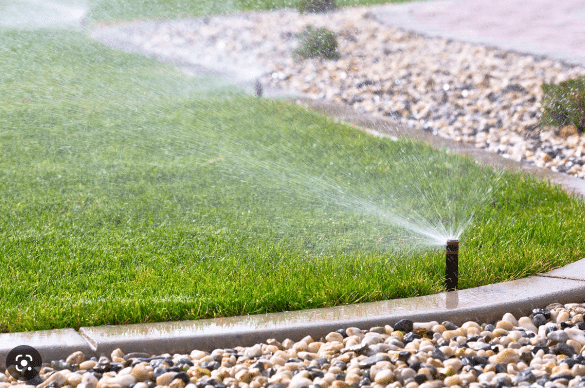Sprinkler System Design Guide For Success
Proper sprinkler design is crucial for maintaining a healthy and vibrant landscape while conserving water and reducing costs. It ensures that water is distributed evenly, avoiding over or under-watering which can lead to plant stress or disease. Additionally, efficient watering practices can result in significant savings on water bills and reduce the environmental impact of excessive water use.
Benefits of a Well-Designed Sprinkler System
Proper zoning and timing are also important aspects of sprinkler design, allowing for different areas of the landscape to be watered according to their specific needs. By understanding the importance of proper sprinkler design and the differences in designs, you can ensure a healthy and beautiful landscape while conserving water and minimizing costs. A well-designed sprinkler system offers numerous benefits, including efficient water usage, cost savings, and healthier plants. By distributing water evenly and precisely, a well-designed system ensures that each area of your landscape receives the right amount of water, avoiding over or under-watering. This efficiency not only saves water but also reduces your water bill. Additionally, proper watering promotes healthier plant growth, leading to a more beautiful and sustainable landscape. Overall, a well-designed sprinkler system is essential for maintaining a thriving outdoor environment while conserving resources.
Factors to Consider in Sprinkler Design
When designing a sprinkler system, several factors should be considered to ensure optimal performance and efficiency:
Property Size and Shape: The size and shape of your property will determine the layout of the sprinkler system, including the number of zones and the placement of sprinkler heads.
Plant Types and Water Needs: Different plants have varying water requirements. Consider the types of plants in your landscape and their individual needs when designing your system.
Local Climate and Weather Patterns: The climate and weather patterns in your area will influence how often and how much you need to water your landscape. Your sprinkler system should be designed to accommodate these factors.
Water Pressure and Flow Rate: The water pressure and flow rate of your irrigation system will affect the efficiency of your sprinkler system. Ensure that your system is designed to operate within the optimal pressure and flow rate range.
Soil Type: The type of soil in your landscape will affect how water is absorbed and distributed. Sandy soil, for example, drains quickly and may require more frequent watering than clay soil.
Slope and Drainage: Consider the slope of your landscape and ensure that your sprinkler system is designed to prevent water runoff and erosion. Proper drainage is essential to avoid water pooling in low-lying areas.
Water Source: Consider the source of your water (e.g., municipal water supply, well) and any restrictions or regulations that may apply to its use. Ensure that your sprinkler system is designed to comply with these regulations.
By considering these factors when designing your sprinkler system, you can ensure that it meets the specific needs of your landscape while conserving water and promoting healthy plant growth.
Types of Sprinkler Systems
There are several types of sprinkler designs, each with its advantages and suited to different landscapes.
Drip irrigation is ideal for garden beds and shrubs, delivering water directly to the root zone to minimize evaporation.
Rotary sprinklers are best for large, open areas like lawns, providing even coverage over a wide area.
Spray heads are suitable for smaller, targeted areas such as flower beds or narrow strips of lawn, delivering water in a fine spray pattern.
Common Mistakes to Avoid
When designing a sprinkler system, it’s important to avoid common mistakes that can lead to inefficiencies and issues with your system. One common mistake is over-watering, which can occur when sprinkler heads are set to run for too long or too frequently. This not only wastes water but can also lead to waterlogged soil and root rot in plants. Another mistake is using the wrong type of sprinkler heads for the job, such as using spray heads in areas where rotary sprinklers would be more appropriate. This can result in uneven watering and dry spots in your landscape. Ignoring maintenance needs, such as cleaning and adjusting sprinkler heads regularly, can also lead to issues with your system. By avoiding these common mistakes and ensuring that your sprinkler system is properly designed and maintained, you can enjoy a healthy, beautiful landscape while conserving water and minimizing costs.
SOME EXPERTS ESTIMATE THAT AS MUCH AS 50 PERCENT OF WATER USED FOR IRRIGATION IS WASTED DUE TO EVAPORATION, WIND, OR RUNOFF CAUSED BY INEFFICIENT IRRIGATION METHODS AND SYSTEMS.
Omni Landscape has been a trusted leader in Denver’s sprinkler design, installation, and repair industry for over 30 years. Known for their expertise and commitment to quality, Omni Landscape has helped countless customers achieve lush, healthy landscapes through efficient and effective sprinkler systems. Their long-standing reputation for excellence makes them the go-to choice for anyone looking for top-notch sprinkler services in the Denver area. Contact Omni Sprinkler Service and Landscaping today and design your top-notch sprinkler system!
Related Content: How long should I hand water my lawn?




